Electric scooters are still illegal on Scotland's roads – but what's it like to ride one?
It was unnerving, then exhilarating, but dare I say it, could it eventually become boring?
My first ride on an electric scooter made me realise immediately the excitement around this new form of transport – but also the concerns about the safety it poses.
Advertisement
Hide AdAdvertisement
Hide AdCompared to having to learn how to ride a bike, nothing could be simpler than giving the e-scooter a push, hopping on and being whisked away.
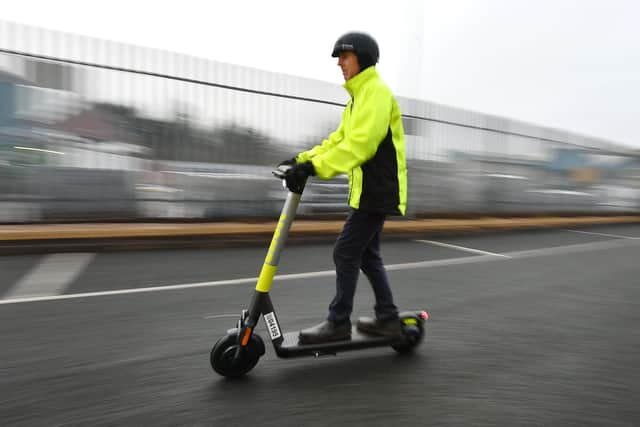

The controls are just an accelerator lever on the handlebar and cycle-like brakes.
The unnerving bit is the electric motor’s rapid acceleration, which takes you effortlessly to the e-scooter’s 15.5mph limit before you know it.
That’s no swifter than an electric bike, but the difference is you reach that speed far quicker and without the need to pedal.
And it also felt faster.
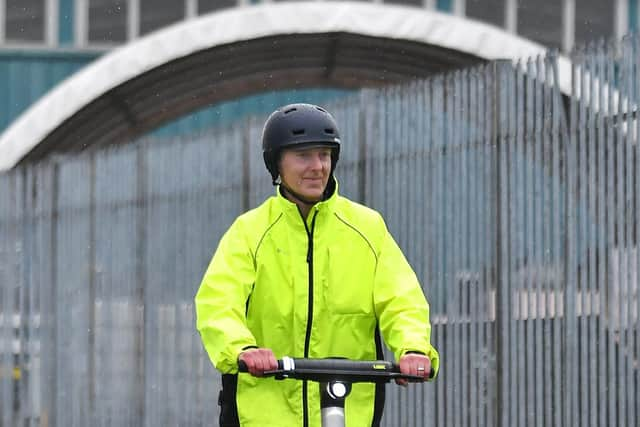

My next thought was where to put my feet, because, while the e-scooter is sturdy and stable, there is an element of balance involved.
That’s especially the case when cornering sharply or doing a U-turn, which reminded me of shifting my balance to change direction on a snowboard – or at least on the Wii balance board version!
The other thing that occurred to me was that balancing was easier going faster than slower, and I wondered if that might encourage riders to accelerate.
It got me thinking about the potential risk to both riders and anybody in their path, a concern raised by pedestrian and disability groups.
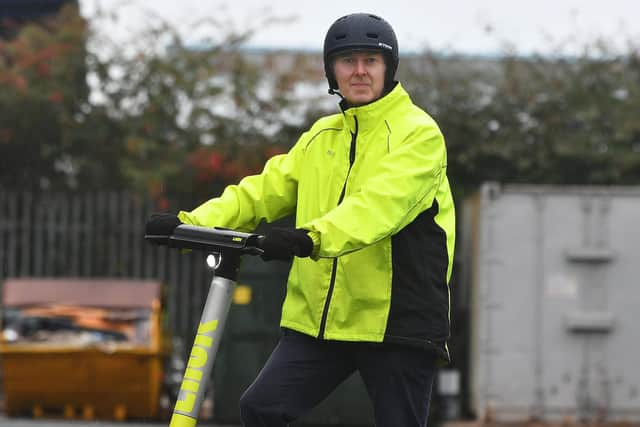

Advertisement
Hide AdAdvertisement
Hide AdThat was particularly brought to mind because the LINK e-scooter I was riding – which the firm operates in Rome and several US cities – is one of the heavier rental models, at 26kg.
However, the company told me new riders are limited to a maximum of 8mph and reduced acceleration for their first few hires.
That was reassuring to hear because I had wondered about novices being let loose on a machine with that much weight and power.
There are also no screens or other distractions on the e-scooter, such as speed or battery charge indicators, so that riders focus on looking where they are going.
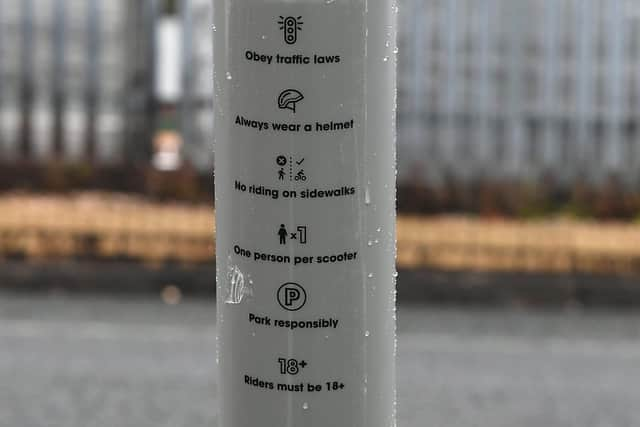

Front and rear lights automatically come on when you ride, and I was glad of the helmet supplied.
After half an hour in our Glasgow office’s private car park, I felt much more confident.
So long as you’ve taken part in an activity involving an element of balance, riding an e-scooter is pretty intuitive.
However, I wasn’t able to venture further and test it on Glasgow’s potholed streets – or over any distance – because e-scooters remain illegal on all but private land.
Advertisement
Hide AdAdvertisement
Hide AdEven if the necessary legislative changes are made to permit their use on Scotland’s roads, they will remain banned from pavements, where the greatest risk of collision with pedestrian lies.
But you might not know that from the number of riders on privately-owned e-scooters zipping around Glasgow and Edinburgh, some perhaps unaware they are breaking the law.
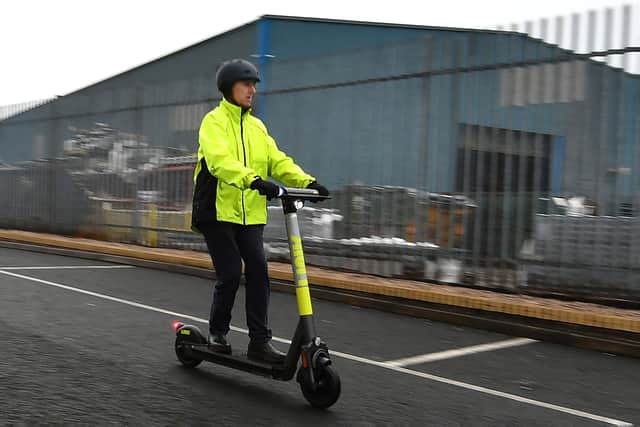

E-scooter rental firms like LINK operate systems which can control their speed and limit their use to specific areas.
Such “geo-fencing” would potentially prevent them being used on pavements and in pedestrian areas in Scotland by cutting the power when they stray off the road.
That is, if the technology works precisely enough and the companies involved go to the trouble of detailed street mapping rather than complaining it would be too expensive to implement.
But effective geo-fencing is likely to allay some of the fears of those with mobility and visual problems who would be unable to dodge a fast-approaching rider.
And could e-scooting become boring?
After the initial adrenaline rush, I just wonder whether standing motionless on a board might become dull after a bit.
Compared to cycling, with its pedals and gears under the rider’s control, might it become a bit like driving a speed-limited automatic car?
What happens next?
Advertisement
Hide AdAdvertisement
Hide AdAround 30 e-scooter rental trials are underway in England but the Scottish Government’s Transport Scotland agency has said additional legislation would be required for similar schemes north of the Border.
In October, Glasgow city councillors asked officials to develop detailed plans for a hire scheme, which is still underway.
Midlothian Council has also told The Scotsman it is “extremely interested” in a trial.
A spokesperson said: “Officers will seek councillors’ approval to progress with trials when legislation and funding allows, proposed as an additional form of active and sustainable travel.”
Among other local authorities to have declared potential interest, Aberdeen City Council has said e-scooters “may have a role to play”.
Edinburgh City Council said it “could look into” trials in the future.
The UK Government, which approved the English trials that run until autumn 2021, said that how they fared would be key to whether e-scooters are legalised for wider use.
However, it said they would remain illegal on pavements.
The Commons transport committee has called for “swift action” to permit the use of private e-scooters on roads and cycle lanes.
Advertisement
Hide AdAdvertisement
Hide AdHowever, chair Huw Merriman acknowledged they were both a pavement nuisance and transport innovation.
He said: “We are mindful that the sales and use of private e-scooters – which are still illegal – continue to rise, with continued negative impacts on pedestrians and disabled people.”
A message from the Editor:
Thank you for reading this article.
We're more reliant on your support than ever as the shift in consumer habits brought about by coronavirus impacts our advertisers.
If you haven't already, please consider supporting our trusted, fact-checked journalism by taking out a digital subscription.
Comments
Want to join the conversation? Please or to comment on this article.